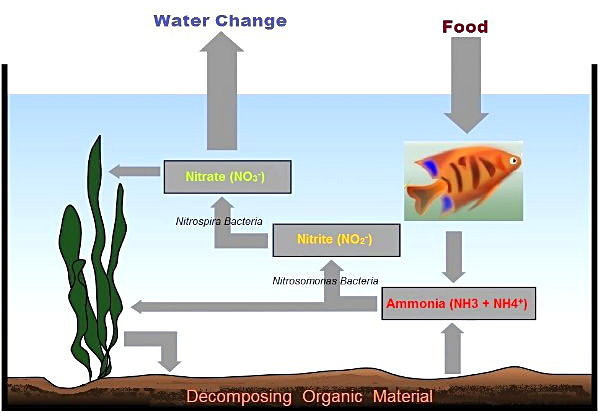TheScovilleCouple
New Member
Hey Guys,
Having a hard job working out what is going on in our 25L nano tank. We took the below tests. Started off by adding Household Ammonia until we reached between 2-4ppm on the API Freshwater Master Test Kit, and redosed when Ammonia dropped below 1ppm. pH seems to be steadily climbing daily while Ammonia and Nitrite don't seem to fluctuate all that much. Took a sample of our water to LFS who said we should do daily 50% Water Changes with tap water (w/ Tap Water Conditioner) for the next 2 weeks, but im worried the pH rising liek this will stall the BB.
Nitrates in our tap water are 40ppm, ran tests on 50/50 water Tap / deionised, H is 7.52 and Nitrate is 5ppm.
Having a hard job working out what is going on in our 25L nano tank. We took the below tests. Started off by adding Household Ammonia until we reached between 2-4ppm on the API Freshwater Master Test Kit, and redosed when Ammonia dropped below 1ppm. pH seems to be steadily climbing daily while Ammonia and Nitrite don't seem to fluctuate all that much. Took a sample of our water to LFS who said we should do daily 50% Water Changes with tap water (w/ Tap Water Conditioner) for the next 2 weeks, but im worried the pH rising liek this will stall the BB.
| Day | pH Reading ( Electronic Meter) | Ammonia Reading (API Master test Kit) | Nitrite Reading (API Master test Kit) | Nitrate Reading (API Master test Kit) | Notes | |
|---|---|---|---|---|---|---|
| 3 | 7.8 | 0.25 | 0 | 20 | ||
| 4 | 7.38 | 4 | 2 | 40 |
| |
| 5 | 6.73 | 1 | 0 | 40 | Switched from Gravel to Fluval Shrimp and Plant Substrate capped with Fine Aquarium Sand | |
| 6 | 7.52 | 0.5 | 0 | 20 | ||
| 7 | 7.97 | 2 | 0.5 | 40 |
| |
| 8 | 8.15 | 1 | 5 | 40 | ||
| 9 | 8.08 | 1 | 1 | 40 | ||
| 10 | 8.11 | 2 | 2 | 40 | ||
| 12 | 8.35 | 2 | 2 | 20 | ||
| 13 | 8.42 | 2 | 2 | 20 | ||
| 14 | 8.56 | 0.5 | 2 | 20 | Started Daily 50% water changes as advised by LFS | |
| 14.5 | 8.53 | 3 | 0.25 | 20 |
| |
| 15 | 8.56 | 3 | 0.25 | 20 |
Nitrates in our tap water are 40ppm, ran tests on 50/50 water Tap / deionised, H is 7.52 and Nitrate is 5ppm.



